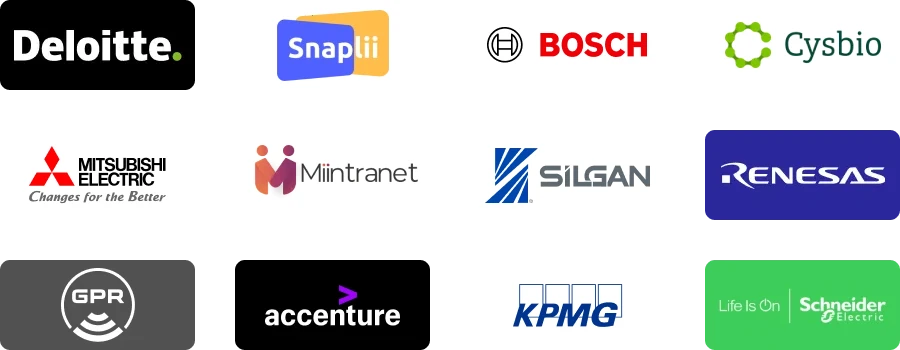| REPORT ATTRIBUTE |
DETAILS |
| Historical Period |
2019-2022 |
| Base Year |
2023 |
| Forecast Period |
2024-2032 |
| Commercial Aquaculture Vaccines Market Size 2023 |
USD 302.91 million |
| Commercial Aquaculture Vaccines Market, CAGR |
6.36% |
| Commercial Aquaculture Vaccines Market Size 2032 |
USD 581.89 Million |
Market Overview
The commercial aquaculture vaccine market has experienced substantial growth over the past decade, with significant advancements in technology and increasing awareness regarding the benefits of vaccination in aquaculture settings. From 2023 to 2032, the market has witnessed a remarkable upward trajectory, reflecting a robust compound annual growth rate (CAGR) of 6.36%. In 2023, the market size was reported at 302.91 million USD, which surged to 581.89 million USD by 2032, indicative of the sector’s burgeoning importance and the expanding scope of aquaculture vaccination initiatives. Several factors have contributed to this steady growth in the commercial aquaculture vaccine market. Firstly, the escalating demand for seafood products globally has intensified the need for sustainable aquaculture practices to meet consumer preferences while ensuring environmental conservation. As traditional methods of disease control in aquaculture, such as antibiotics, face increasing scrutiny due to their potential environmental and public health implications, vaccination has emerged as a safe and effective alternative for disease prevention in farmed fish and shellfish.
Furthermore, advancements in vaccine development technologies have propelled the efficacy and accessibility of aquaculture vaccines, making them more suitable for a diverse range of aquatic species. Modern vaccine formulations are tailored to specific pathogens prevalent in aquaculture environments, offering targeted protection against diseases that pose significant threats to fish and shrimp populations. This specificity enhances the overall health and productivity of aquaculture operations, minimizing economic losses associated with disease outbreaks and reducing reliance on antimicrobial agents. The rising adoption of aquaculture vaccines is also driven by regulatory initiatives aimed at promoting sustainable aquaculture practices and ensuring food safety standards. Governments and regulatory bodies across various regions have implemented stringent guidelines and standards for aquaculture production, emphasizing the importance of disease prevention and control measures, including vaccination, to mitigate risks associated with aquatic animal health. Compliance with these regulations has incentivized aquaculture producers to integrate vaccination into their management strategies, thereby fostering a conducive environment for market growth and innovation.
Access crucial information at unmatched prices!
Request your sample report today & start making informed decisions powered by Credence Research Inc.!
Download Sample
Market Drivers
Increasing Demand for Sustainable Seafood Production:
The escalating demand for seafood, driven by population growth and changing dietary preferences, underscores the importance of sustainable aquaculture practices. Commercial aquaculture vaccines play a pivotal role in ensuring the health and welfare of farmed aquatic species, thereby bolstering the sustainability of seafood production. As consumers become more conscientious about the environmental impact of their food choices, the demand for responsibly sourced seafood produced through vaccinated aquaculture systems is expected to surge.
Rising Incidence of Aquatic Diseases:
Aquatic diseases pose significant challenges to the aquaculture industry, leading to substantial economic losses and production setbacks. Factors such as the intensification of aquaculture operations, globalization of trade, and environmental stressors contribute to the increased prevalence and spread of pathogens in aquaculture facilities. For instance, from 2014 to 2018, approximately 219 cases of infectious diseases in the fresh aquaculture sector were registered. In response, there is a growing emphasis on proactive disease management strategies, including vaccination, to mitigate the impact of diseases on fish and shellfish stocks. The need for effective vaccines to combat prevalent and emerging aquatic pathogens is a major driver propelling the growth of the commercial aquaculture vaccine market.
Regulatory Support and Government Initiatives:
Regulatory frameworks and government initiatives play a pivotal role in shaping the landscape of the commercial aquaculture vaccine market. Governments worldwide are recognizing the significance of aquaculture in meeting the growing demand for protein sources and alleviating pressure on wild fish stocks. In many countries, regulatory agencies are actively promoting the use of vaccines as an integral component of aquaculture health management practices. Subsidies, incentives, and supportive policies aimed at enhancing the accessibility and affordability of aquaculture vaccines further stimulate market growth and innovation in vaccine development.
Advancements in Biotechnology and Research Investments:
Technological advancements and research investments drive innovation and advancement in commercial aquaculture vaccines. The convergence of biotechnology, genomics, and immunology has enabled the development of next-generation vaccines tailored to the specific needs of diverse aquatic species. Academic, industry, and government institutions, through targeted research efforts and collaborative partnerships, have made significant strides in understanding aquatic pathogens, vaccine formulation techniques, and delivery mechanisms. These advancements have resulted in the development of novel vaccines with improved efficacy, safety, and scalability, thereby expanding the market opportunities for commercial aquaculture vaccines.
Market Trends
Increased Demand for Disease Prevention:
Growing awareness among aquaculture producers about the importance of disease prevention is driving a surge in demand for commercial aquaculture vaccines. With intensifying global aquaculture production, the risk of disease outbreaks has become a significant concern, prompting producers to seek effective vaccination solutions to safeguard their stocks.
Technological Advancements Driving Innovation:
Technological advancements in vaccine development techniques and delivery systems are propelling innovation in the commercial aquaculture vaccine market. For example, the sector has witnessed a change of trend to DNA vaccines from live attenuated vaccines and is swiftly accepting recombinant vaccines as well. Novel vaccine formulations and administration methods are emerging to address specific challenges encountered in different aquaculture species, enhance vaccine efficacy, and ensure better disease control.
Expansion of Aquaculture Industry:
The expansion of the aquaculture industry, particularly in developing regions, is contributing to the growth of the commercial aquaculture vaccine market. As aquaculture becomes an increasingly vital source of protein worldwide, there is a growing need for reliable and cost-effective vaccines to mitigate the risks posed by infectious diseases and maximize productivity.
Regulatory Support and Compliance:
Regulatory support and compliance requirements are shaping the commercial aquaculture vaccine market landscape. Governments and regulatory bodies are actively involved in establishing guidelines and standards for the development, approval, and use of aquaculture vaccines to ensure product safety, efficacy, and environmental sustainability. For instance, the Food and Agriculture Organization of the United Nations reports that roughly 83 percent of fishermen get insurance for their boats. Compliance with regulatory requirements is becoming a key factor for market players to gain market access and maintain consumer confidence.
Rising Investments in Research and Development:
Growing investments in research and development (R&D) activities aimed at enhancing vaccine technology and expanding the product portfolio are driving the competitiveness of the commercial aquaculture vaccine market. Industry players are investing in collaborative initiatives, strategic partnerships, and acquisitions to accelerate the development and commercialization of innovative vaccines tailored to the specific needs of different aquaculture species and production systems.
Market Restraints and Challenges
Regulatory Hurdles:
The commercial aquaculture vaccine market faces significant regulatory challenges that hinder its growth and development. Governments across different regions impose stringent regulations regarding the approval, registration, and use of vaccines in aquaculture. Navigating through complex regulatory frameworks demands extensive resources, time, and expertise, which can deter vaccine manufacturers and impede market expansion. Moreover, varying regulatory requirements across different countries add another layer of complexity, increasing compliance costs and delaying market entry.
High Development Costs:
Developing vaccines for commercial aquaculture entails substantial research and development (R&D) investments. The process involves identifying suitable antigens, conducting preclinical trials, optimizing vaccine formulations, and ensuring efficacy and safety standards. Additionally, commercial aquaculture often involves diverse species with unique immunological profiles, necessitating tailored vaccine solutions for each species. Such customization further escalates R&D costs and extends the time-to-market for new vaccines. Consequently, the high development costs pose a significant barrier to entry for smaller companies and restrict overall market growth.
Limited Vaccine Efficacy:
Achieving consistent and high vaccine efficacy presents a persistent challenge in the commercial aquaculture sector. Factors such as antigen selection, delivery methods, dosing regimens, and environmental conditions can influence vaccine performance and effectiveness. Additionally, the changing nature of aquatic environments, which includes a wide range of microbes and changing water quality parameters, makes it harder to keep vaccines stable and effective. Suboptimal efficacy rates not only compromise disease control measures but also erode farmer confidence in vaccination strategies, thereby limiting market acceptance and adoption.
Disease Complexity and Diversity:
The commercial aquaculture industry grapples with a wide array of infectious diseases caused by diverse pathogens, including bacteria, viruses, and parasites. Each pathogen presents unique challenges in terms of host-pathogen interactions, disease transmission dynamics, and immune responses. Developing effective vaccines against such diverse pathogens demands a nuanced understanding of their biology and virulence mechanisms. Furthermore, emerging pathogens and disease outbreaks necessitate continuous innovation and adaptation of vaccine technologies to address evolving disease threats. The complex and evolving nature of aquatic pathogens underscores the need for robust research and development efforts, which can strain resources and impede market growth.
Consumer Perception and Market Acceptance:
Consumer perception and market acceptance of aquaculture vaccines represent another significant challenge for industry stakeholders. Despite the potential benefits of vaccination in enhancing fish health, productivity, and sustainability, concerns regarding vaccine residues, environmental impact, and food safety persist among consumers and regulatory agencies. Addressing these concerns requires transparent communication, proactive risk assessment, and adherence to stringent safety and quality standards throughout the vaccine production and administration process. Additionally, fostering consumer trust and confidence in aquaculture vaccines necessitates concerted efforts in education, outreach, and stakeholder engagement. Failure to address consumer apprehensions and regulatory scrutiny can undermine market growth prospects and limit the widespread adoption of aquaculture vaccines.
Key Players
- Zoetis Inc.
- Elanco Animal Health
- Merck & Co., Inc.
- HIPRA
- Bayer AG
- Phibro Animal Health Corporation
- Ceva Santé Animale
- Intervet Inc.
- Tecnovax
- Vaxxinova
Recent Developments
- As a strategic extension of its PharmaQ business, Zoetis purchased Fish Vet Group from Benchmark Holdings, PLC, in July 2020. The Fish Vet Company develops and distributes fish vaccines and offers immunization and diagnostic services for aquaculture.
- With the development and production of a COVID-19 vaccine in December 2020, HIPRA took a significant step in the direction of improving human health. Salvador Illa, the Spanish Minister of Health, visited HIPRA and emphasized the innovative capabilities of the pharmaceutical firm for addressing this new stage.
Segmentation Analysis
By Vaccine
Firstly, segmentation by vaccine type illustrates a diverse array of immunization products tailored to specific aquatic pathogens. Vaccines targeting viral, bacterial, and parasitic pathogens reflect the industry’s commitment to addressing multifaceted health challenges in aquaculture. This segmentation allows for targeted solutions, optimizing disease prevention and management strategies across different aquatic environments.
By Pathogen
Moreover, segmenting by pathogen underscores the importance of precise pathogen identification and targeted intervention strategies. Aquaculture vaccines are tailored to combat a spectrum of pathogens, including viruses like the infectious pancreatic necrosis virus (IPNV), bacteria such as Vibrio spp., and parasites like Ichthyophthirius multifiliis. Each pathogen presents unique challenges to aquaculture health, necessitating specialized vaccine formulations and administration protocols.
By Species
Species-specific segmentation highlights the tailored approach required to safeguard the health of various aquatic organisms. From salmonids to shrimp and tilapia, each species presents distinct immunological profiles and susceptibilities to specific pathogens. Aquaculture vaccines must account for species-specific differences in immune response and disease susceptibility to effectively mitigate health risks and optimize production outcomes.
By Route of Administration
Furthermore, segmentation by route of administration delineates diverse delivery mechanisms tailored to the unique anatomy and physiology of aquatic species. Vaccines may be administered via immersion, injection, oral ingestion, or spray, with each method offering distinct advantages in terms of efficacy, safety, and practicality. This segmentation underscores the importance of selecting the most appropriate administration route based on species requirements, production systems, and disease epidemiology.
By End-User
End-user segmentation reflects the diverse stakeholders involved in the aquaculture vaccine value chain, including farmers, hatcheries, feed manufacturers, and integrated aquaculture enterprises. Tailored vaccine solutions and support services cater to the specific needs and operational dynamics of each end-user segment, fostering collaboration and knowledge exchange to optimize health outcomes and economic sustainability.
By Region
Regional segmentation acknowledges the diverse aquaculture landscapes and disease epidemiologies shaping vaccine demand and adoption worldwide. From Asia-Pacific to Europe and the Americas, regional nuances in production systems, regulatory frameworks, and disease prevalence influence market dynamics and product preferences. Understanding regional variations enables stakeholders to tailor marketing strategies, distribution networks, and product portfolios to local market needs, fostering sustainable growth and resilience in the global aquaculture vaccine market.
Segmentations
By Vaccine:
- Inactivated
- Attenuated
- Subunit
- DNA
By Pathogen:
By Species:
- Salmon
- Tilapia
- Trout
- Sea Bass
- Carp
- Turbot
- Bream
- Others
By Route of Administration:
- Intraperitoneal
- Intramuscular
- Immersion
- Oral
End User:
- Fish Farming Companies
- Fish Veterinary Clinics
- The Aquatic Research Institute
Region:
- North America
- Europe
- Germany
- France
- The U.K.
- Italy
- Spain
- Rest of Europe
- Asia Pacific
- China
- Japan
- India
- South Korea
- South-east Asia
- Rest of Asia Pacific
- Latin America
- Brazil
- Argentina
- Rest of Latin America
- Middle East & Africa
- GCC Countries
- South Africa
- Rest of Middle East and Africa
Regional Analysis
Asia-Pacific stands as the dominant region in the commercial aquaculture vaccine market owing to its thriving aquaculture industry, particularly in countries like China, India, and Indonesia. The region benefits from extensive aquaculture production, high demand for seafood, and governmental initiatives promoting aquaculture sustainability. According to the 2022 report of the Food and Agriculture Organization (FAO) of the United Nations, Asian countries were the main producers, accounting for 70% of the total fisheries and aquaculture production of aquatic animals. With a substantial market share, Asia-Pacific is expected to maintain its leadership position in the coming years.
North America represents another significant market for commercial aquaculture vaccines, propelled by the growing consumption of seafood and the increasing adoption of advanced aquaculture technologies. Countries like the United States and Canada are key contributors to the regional market share, driven by stringent regulations ensuring food safety and sustainability. The market in North America is characterized by continuous research and development activities aimed at enhancing vaccine efficacy and addressing emerging aquatic diseases.
Europe holds a notable market share in the commercial aquaculture vaccine market, supported by a well-established aquaculture industry and rising consumer preference for sustainably sourced seafood products. In Europe, the development and use of aquatic vaccines are the safest and most effective ways to prevent aquatic animal diseases and preserve the health and sustainability of aquaculture. Countries such as Norway, Scotland, and Spain are prominent players in the European market, leveraging advanced vaccine technologies and stringent regulatory frameworks to ensure the health and welfare of farmed aquatic species. The market in Europe is witnessing innovations in vaccine delivery systems and formulations to optimize disease prevention and control.
Latin America is emerging as a significant market for commercial aquaculture vaccines, fueled by the expansion of aquaculture activities across the region and increasing investments in aquaculture infrastructure. Countries like Chile, Brazil, and Ecuador are at the forefront of aquaculture production in Latin America, driving demand for vaccines to mitigate disease risks and enhance productivity. The market in Latin America is characterized by collaborations between industry players and research institutions to develop effective vaccines tailored to regional aquaculture challenges.
Shape Your Report to Specific Countries or Regions & Enjoy 30% Off!
Future Outlook
- Continued Growth Trajectory: The commercial aquaculture vaccine market is poised for sustained expansion over the next decade, driven by increasing demand for safe and sustainable seafood production.
- Technological Advancements: Expect ongoing innovation in vaccine development technologies, leading to more efficacious and cost-effective solutions tailored to diverse aquaculture species.
- Diversification of Product Portfolio: Market players will diversify their product portfolios to address a wider range of aquatic pathogens, enhancing disease prevention and control across various fish and shrimp species.
- Regulatory Compliance: Stricter regulatory frameworks worldwide will shape the market landscape, necessitating compliance with stringent quality and safety standards for aquaculture vaccines.
- Emphasis on Biosecurity: Heightened awareness of biosecurity measures will spur investments in advanced vaccination strategies, mitigating disease outbreaks, and minimizing economic losses in aquaculture operations.
- Adoption of Novel Delivery Systems: Anticipate increased adoption of innovative vaccine delivery systems, such as oral and immersion vaccines, offering convenient and effective disease management solutions for aquaculture producers.
- Expansion into Emerging Markets: Market expansion efforts will target emerging aquaculture markets, particularly in Asia-Pacific and Latin America, driven by rising seafood consumption and aquaculture production capacities.
- Collaborative Partnerships: Collaboration between vaccine developers, aquaculture producers, and research institutions will foster knowledge exchange and accelerate the development of next-generation vaccines tailored to regional aquaculture challenges.
- Focus on Sustainability: Sustainability considerations will underpin market strategies, prompting the development of environmentally friendly vaccine formulations and production processes to minimize ecological impact.
- Market Consolidation and Competition: Expect increased competition among key market players, driving consolidation activities and strategic partnerships aimed at enhancing market presence and global competitiveness in the commercial aquaculture vaccine sector.







